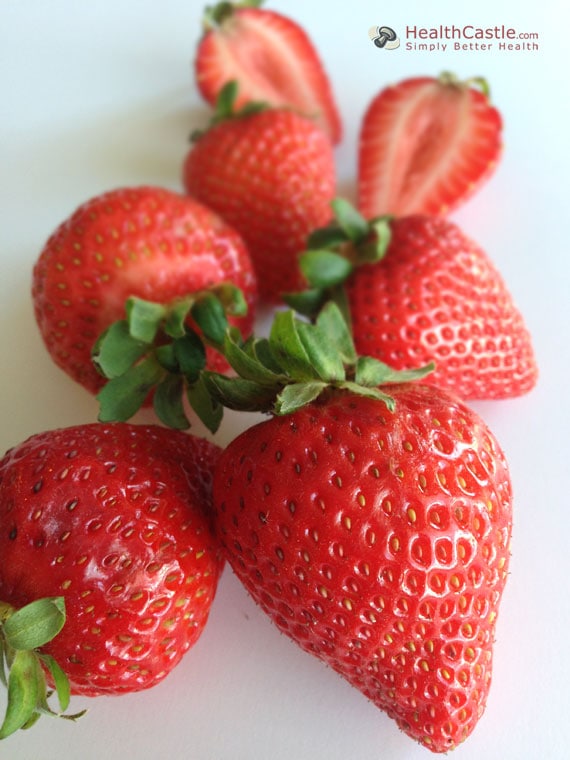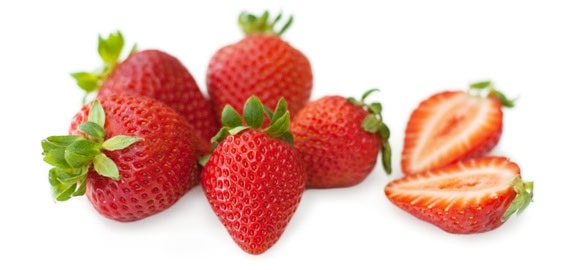
Written By: Gloria Tsang, RD
Title: Founding Registered Dietitian
Alumni: University of British Columbia
Last Updated on:

When we asked you, our readers, about your favorite summer fruits last week, 49% of you voted for summer berries. With that in mind, we decided to write about one of the most favorite berries – strawberries. It is documented that strawberries were cultivated as early as in ancient Rome! In the United States, more than 85 percent of the nation’s strawberries are grown in California. In Canada, commercial strawberry cultivation is more evenly distributed among provinces, with Quebec, Ontario, and British Columbia providing more than 80 percent of the crops.

Table of Contents
1 cup of halved strawberries contains:

Strawberries are a rich source of Vitamin C. Indeed, 8 strawberries provide more Vitamin C than an orange! They are also a good source of potassium and aid in lowering blood pressure and counteracting the detrimental effects of sodium. With their sweetness, fiber may not come to your mind. However, just 8 sweet strawberries can provide 3 grams of fiber – that’s more fiber than a cup of Cheerios can provide! With their bright red colors, strawberries are rich in anthocyanins – a group of antioxidants with potential to protect against inflammation and free radical damage. Other antioxidant flavonoids are also found in strawberries – including procyanidins, quercetin, catechins, and epigallocatechins.
A small study published in 2010 found that strawberry supplementation improved blood cholesterol profile by lowering total cholesterol and LDL cholesterol. Another large-scale study looked at 27,000 women and found that those with the highest strawberry intake were more likely to follow a heart-smart diet. And high intake is only 2 servings a week! That’s so easy to achieve – especially in the summertime.
Strawberries are also rich in ellagic acid – a type of photochemical that has shown promising results in cancer prevention in animal studies. In particular, lung, esophagus, and skin cancer tumors seem to be able to inhibited by ellagic acid.
Strawberries stop ripening once picked. Therefore, choose those that are fully red and shiny with green caps attached, and avoid those with green or yellow patches. Strawberries are very perishable, so they can only be stored in the fridge for a few days after purchase. Most strawberries are sold in a clear clamshell. Make sure they are not packed too tight and are free of mold. We have found that smaller strawberries taste better than large ones. Do you find it to be the same?
Alumni: University of British Columbia – Gloria Tsang is the author of 6 books and the founder of HealthCastle.com, the largest online nutrition network run by registered dietitians. Her work has appeared in major national publications, and she is a regularly featured nutrition expert for media outlets across the country. The Huffington Post named her one of its Top 20 Nutrition Experts on Twitter. Gloria’s articles have appeared on various media such as Reuters, NBC & ABC affiliates, The Chicago Sun-Times, Reader’s Digest Canada, iVillage and USA Today.
antioxidant, fruits, grocery aisle, healthy every month, heart smart, strawberries